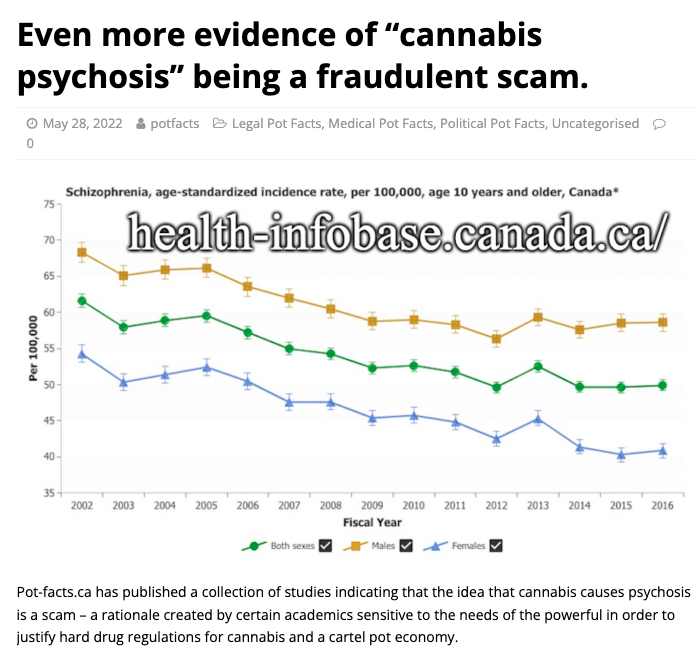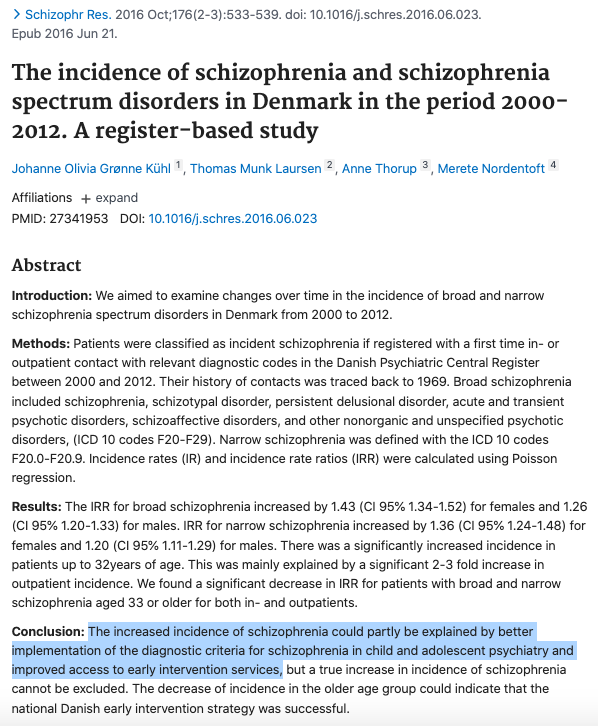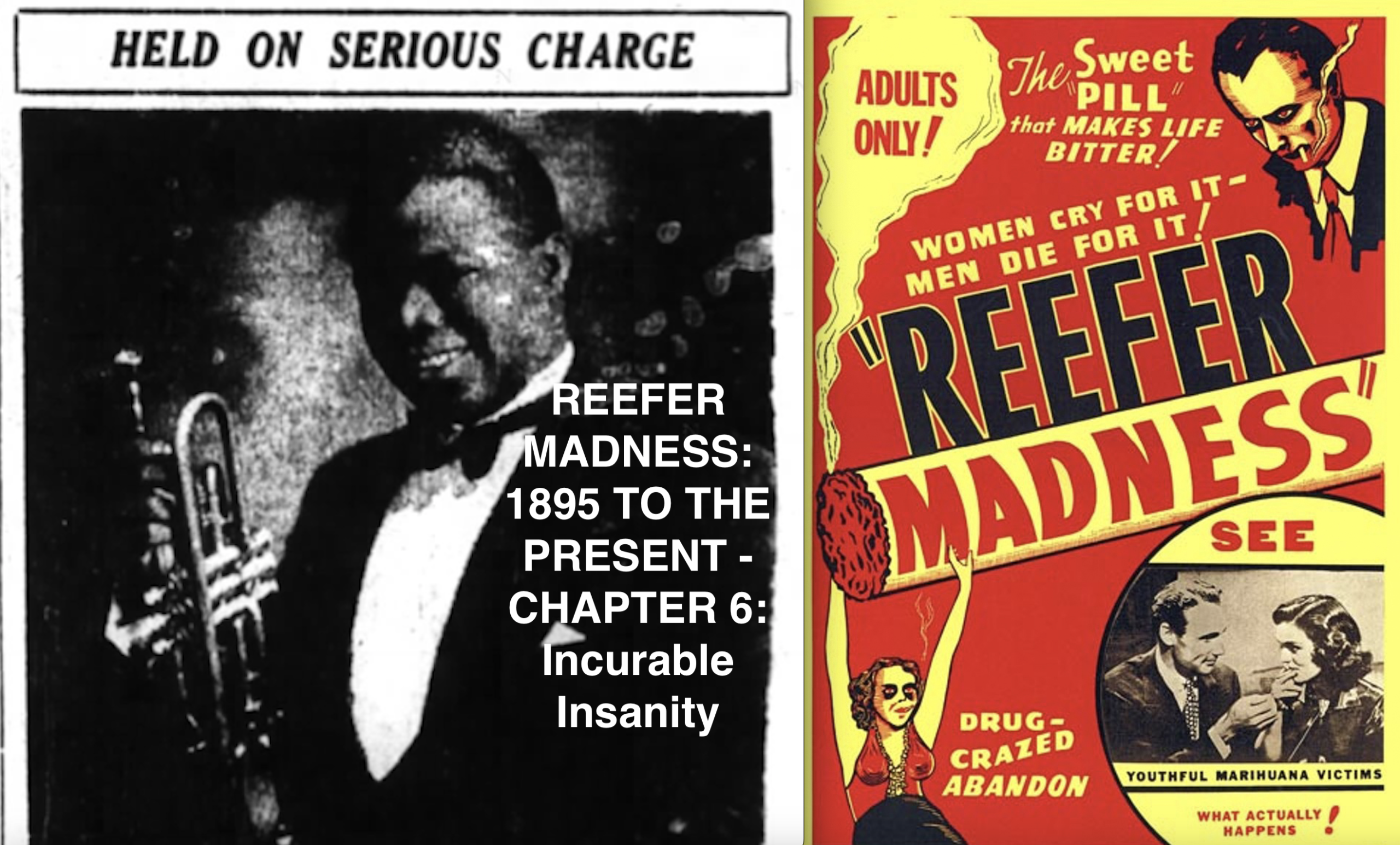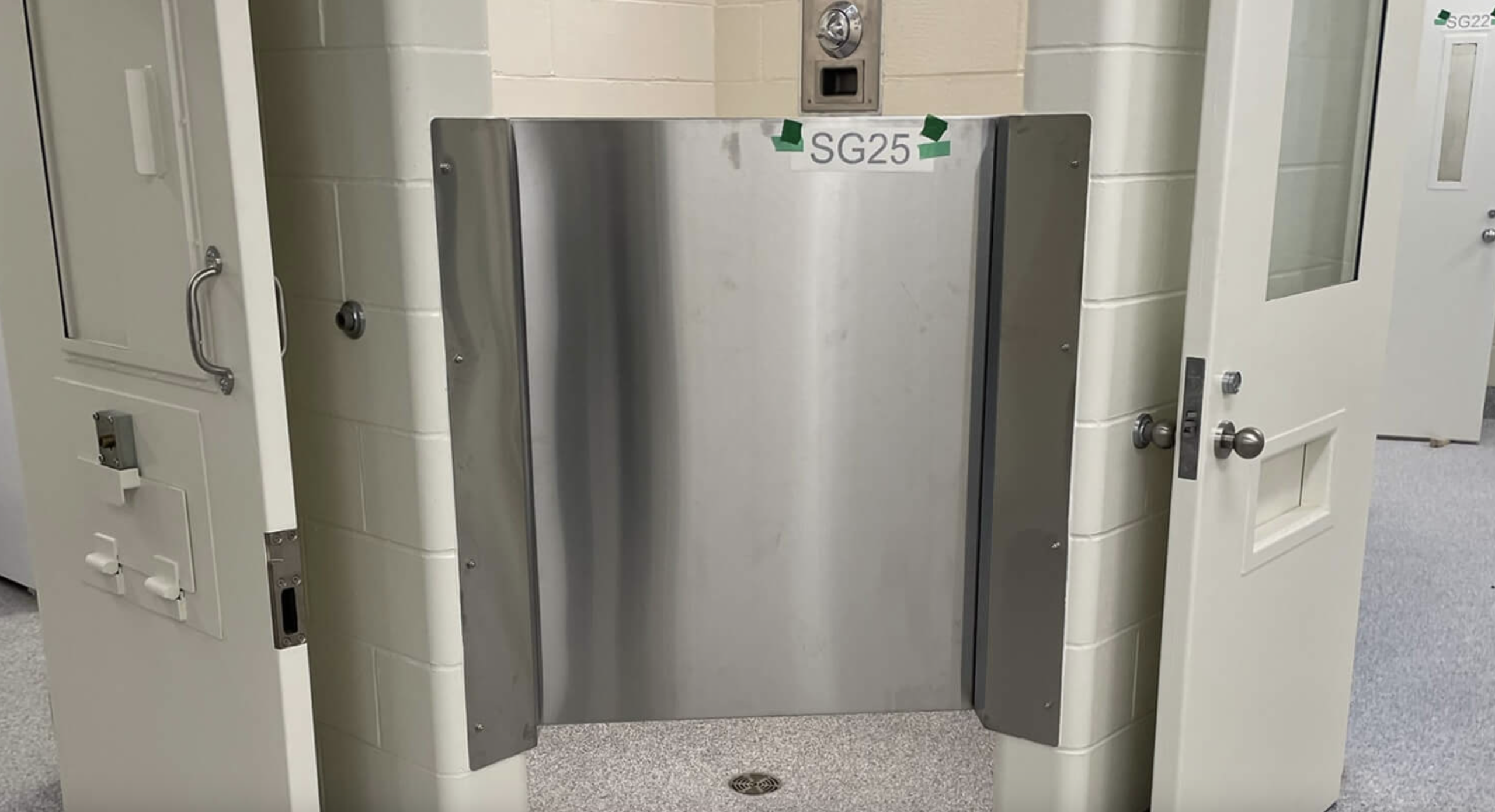Reefer Madness: 2023 Edition

CANNABIS CULTURE – The foisters of stigma against pot will never stop their campaign.
Those who understand the connection between pot stigma and pot cartels and who view the pot cartel as unjust, dangerous and occasionally deadly must be equally relentless in debunking this persistent myth.
“I get broke too many times, I might slang some dimes (Back to trappin’) You believe corporations runnin’ marijuana? Ooh (How that happen?)”
– Run The Jewels, “JU$T,” from RTJ4, released in 2020
“‘How did we justify the war on drugs for many decades? It’s to protect the kids. ‘Got to protect the kids, protect the kids!’ Ethan Nadelmann, founder of the Drug Policy Alliance and once described by Rolling Stone magazine as the most influential man behind the legalization of marijuana in America, said in Montreal. ‘I understand why Trudeau needs to say that. But let’s not delude ourselves that somehow, by emphasizing the sort of criminal or hyper- regulatory elements of a cannabis legalization system that somehow we’re going to dramatically reduce the availability of marijuana to young people.’ Nadelmann said. It hasn’t happened in the 40-year war on drugs in the U.S., and ‘I just don’t see it happening here.’ He and others also say the perils of pot are also being exaggerated and that most youth who smoke marijuana are nonetheless okay. ‘The vast majority of people who started using cannabis young – I was 18, but others who did it when they were 17, 16, 14 – you know
what? They’re fine today!’ Nadelmann said.”
– “HARSH JUSTICE,” National Post, June 15 th , 2018, p. SR5

Image #1: https://www.statnews.com/2015/12/12/nora-volkow/
Head of the stigma-foisters and voice of anti-legalization & over-regulation
Recently it came to my attention that some academics from Denmark and the USA – including Nora D. Volkow – the notorious (1) head of the stigma-foisting (2) U.S. National Institute on Drug Abuse – published yet another study (3) “proving” cannabis caused mental illness. Volkow is a militant, high-profile anti legalizer, and has been quoted repeatedly in the press over the years touting Reefer Madness myths:
“The National Institute on Drug Abuse says research is ongoing. Dr. Nora Volkow, the institute’s director, worries that legalizing pot will result in increased use of marijuana by young people, and impair their brain development. ‘Think about it: Do you want a nation where your young people are stoned?’ she asks. Partisans on both sides think people in other states will keep a close eye on Colorado and Washington as they decide what happens next. But past predictions on pot have been wildly off-base. ‘Reefer Madness,’ the 1936 propaganda movie that pot fans turned into a cult classic in the 1970s, spins a tale of direct consequences ‘ending often in incurable insanity.’” (4)
“‘We should be extremely concerned,’ said Nora Volkow, director of the National Institute on Drug Abuse. The growing use parallels an increase in the potency of marijuana, so the drug can be more harmful to developing brains than in the past.” (5)
“The higher the content of THC, the greater the likelihood that you will become addicted to the drug . . . The content of THC has gone up at least 4-fold.” (6)
“Marijuana and hallucinogen use among young adults reached an all-time record last year after having leveled off during the first year of the coronavirus pandemic, according to federal survey data. . . . ‘Overall, the results are very concerning,’ said Dr. Nora Volkow, director of the National Institute on Drug Abuse, which publishes the annual Monitoring the Future survey. ‘What they tell us is that the problem of substance abuse among young people has gotten worse in this country, and that the pandemic, with all its mental stressors and turmoil, has likely contributed to the rise.’” (7)
“‘Cannabis use disorders are often associated with dependence—in which a person feels withdrawal symptoms when not taking the drug. People who use marijuana often report irritability, mood and sleep difficulties, decreased appetite, cravings, restlessness, and/or various forms of physical discomfort that peak within the first week after quitting and last up to two weeks,’ explains Nora Volkow, MD, director of the National Institute on Drug Abuse (NIDA).” (8)
“‘I’m concerned by the increase in the number of people who are using cannabis at higher doses on a daily basis,’ said Nora Volkow, MD, director of the National Institute on Drug Abuse (NIDA). ‘Adolescents are more vulnerable to addiction, and once they are using compulsively, cannabis can interfere with memory and learning.’” (9)
How Stigma Leads To Pot Cartels
This latest study – as with all pot-related stigma in the 21 st century – is designed to give the casual reader the impression that cannabis is the type of drug that was much too dangerous for anyone other than adults to consume and the wealthy to grow and sell.
The Canadian pot cartel serves as a well-studied example of how all modern pot cartels operate: a very limited number of producers and retailers are justified with the reasoning that the wealthy are the only ones who can afford to meet elaborate security and strict accounting criteria – criteria which were first introduced at the onset of the Canadian med-pot cartel back in 2014. (10) This criteria – often involving hundreds of thousands (if not millions) of dollars- worth of regulations – was again justified by the Task Force On Cannabis Legalization and Regulation and their report (“A Framework for the Legalization and Regulation of Cannabis”) right before Canadian legalization took place in 2018. (11)

Image from: https://www.theglobeandmail.com/news/national/questions-raised-over-marijuana-task-force-chairs-ties-to-industry/article34694710/
The Task Force was chaired by Anne McLellan, who worked for Bennett Jones at the time – a “major advisory firm in the marijuana sector” – in other words, she worked for the pot cartel. (12) Dr. Mark Ware, who advised the Canadian federal government on cannabis policy since 2001 – and who, in 2016, served as the Federal Task Force’s vice-chair on the Legalization and Regulation of Cannabis in Canada – joined with the biggest pot cartel corporation Canopy Growth as Chief Medical Officer in July 2018. (13) The obvious conflict of interest (cashing in on the Reefer Madness you helped to consolidate with your suspect report) is staggering.
 Image #3: https://www.youtube.com/watch?v=WnkPhtXJzak&t=246s
Image #3: https://www.youtube.com/watch?v=WnkPhtXJzak&t=246s
The 2023 Study
The study in question – titled “Association between cannabis use disorder and schizophrenia stronger in young males than in females” – was given much attention in the media in May of this year. (15)

Image from: https://www.cambridge.org/

Image #5: https://www.nbcnews.com/health/mental-health/marijuana-use-mental-health-young-adults-weed-rcna849
What the study didn’t mention: psychosis rates are not increasing in multiple nations
One would have to look past the media attention and the study conclusions and instead look very carefully at the way the study was constructed to understand just how sneaky these academics were being.
The glaring fact that cannabis use has increased five-fold in the general population of all nations examined while psychosis rates in those countries have remained stable – brought up by many academics and researchers (16) – was missing from the 2023 Danish/US report. No mention of all the recent studies that brought attention to this fact – Suvisaari et al. 1999; Degenhardt et al., 2003; Arseneault et al., 2004; Macleod et al. 2004; Auther et al., 2012; Kirkbride et al. 2012; Ksir et al. 2016; Walsh et al., 2016 or any of the many other such studies – was made in this latest study.

Image #6: https://pot-facts.ca/even-more-evidence-of-cannabis-psychosis-being-a-fraudulent-scam/
What the study did claim: “Pot was getting stronger!”
The first thing that caught my eye in this latest study was the often-made claim that cannabis
was getting stronger:
“Moreover, cannabis potency measured by the percentage of delta-9-tetrahydrocannabinol (THC) (main psychoactive component of cannabis) has increased dramatically, e.g. from −10% in 2009 to 14% in 2019 in the USA (ElSohly, Chandra, Radwan, Majumdar, & Church, Reference ElSohly, Chandra, Radwan, Majumdar and Church2021); and from 13% in 2006 to 30% in 2016 in Denmark (Freeman et al., Reference Freeman, Groshkova, Cunningham, Sedefov, Griffiths and Lynskey2019).” (17)
The “cannabis is getting stronger” argument has been debunked successfully – the “we’ve only had strong cannabis products to smoke in the last few years” is a total joke. The argument has been totally destroyed many times by many authors, most recently by Dana Larsen, writing for cracked.com. (18)

Image #7: https://www.cracked.com/article_31012_marijuana-is-67200-times-stronger-than-it- used-to-be-if-you-believe-the-media.html
Larsen noted that it was claimed by the U.S. Surgeon General in 2019 that cannabis was 3 times stronger than 20 years earlier, that 24 years earlier, in 1995, drug czar Lee Brown claimed that cannabis was “40 times more potent . . . than 10, 15, 20 years ago,” that in 1986, the National Institute of Drug Abuse claimed that “The potency of marijuana has increased sevenfold in the past eleven years,” that in 1975, national columnist Paul Harvey claimed that “The potency of the Jamaican Colombian variety is 15 to 20x stronger than our 1960s variety,” that in 1967, the Associated Press reported that “A more potent strain of marijuana – reportedly capable of addicting those who use it – is now being smuggled into the United States,” and that way back in 1947, it was reported in the St. Louis Globe-Democrat that “The Mexican crop of stronger, newly developed marijuana weeds . . . is believed to relax muscular and mental tension, and permit musicians to play faster.” Using these official statistics from government agents and corporate reporters as a guide, Larsen calculated that the cannabis of today is approximately 67,200 times as potent as the Reefer Madness-inducing cannabis of the 1930s – which is an excellent reason to not use official statistics from government agents and corporate reporters as a guide for anything.
But let’s assume, for the sake of argument, that pot is getting more potent. There’s also such a
thing as “self-titration” that is to say, “people stop smoking when they’re high enough” – that’s why hashish – which has been around for hundreds of years and has always been very potent – does not result in people getting higher than when they smoke cannabis flowers. They just smoke less of the hash.
Here’s some evidence of the existence of self-titration from medical professionals:
“Starting with a small amount and gradually increasing the dose is the key to avoiding unwanted mental side effects. This is called titration – self-titration if adjusted by the user.” (19)
“An experienced cannabis smoker can titrate and regulate dose to obtain the desired acute effects and to minimize undesired effects.” (20)
“‘Most people on a six-point scale say they want to get to a three or a four and they don’t want to spend more than about three or four hours high,’ says Mitch Earleywine, citing surveys he and another researcher have conducted among pot smokers. Users of a drug — any drug — regulate their intake according to potency and desired effect. A person sipping vodka with a potency of 40 per cent alcohol will consume a much smaller volume of liquid than he would if he were drinking wine with a potency of 16 per cent alcohol or beer at five per cent. Similarly, someone smoking pot with 15 per cent potency will inhale far less smoke than he would if he were smoking pot with two per cent potency. (The parallel with alcohol breaks down in one respect, however: Someone who drinks an entire bottle of vodka can overdose and die whereas it is physically impossible for a person to consume enough marijuana to cause a fatal overdose.) Although this simple equation is rarely mentioned in debates about marijuana, it is common sense among pot smokers. And it has been borne out by research, including a University of Michigan study of teen pot smokers which concluded that rising THC levels caused users to inhale ‘less marijuana as measured by volume.’ Mr. Earleywine notes that surveys asking users how high they get show no change since the 1970s, despite the increase in marijuana potency. ‘It’s just that they’re smoking less of it, rather than getting higher.’ Oddly enough, this suggests that rising marijuana potency may produce a modest health benefit. ‘When smoking stronger pot, you smoke less and you have less exposure to tars and respiratory irritants,’ Mr. Earleywine says, adding with a laugh, ‘so in some ways it’s worth smoking the best pot you can afford.’” (21)
If titration is real – and there’s every reason to suspect it is – then it doesn’t matter if cannabis is
getting stronger – people are just smoking less of it to achieve the desired effect. The stigma-foisters like to pretend cannabis is like a flame and we are all moths. The medical establishment can’t imagine a medicine that doctors are not in control of the dosing process. Prohibitionists and the medical establishment are very anti-autonomy. But the history of unsupervised cannabis use is filled with examples of capable users and the many benefits of autonomy.
The study’s other claim – “Psychosis is rising in the Danish general population because of cannabis use!”
This latest study makes a very definitive statement regarding psychosis incidence rates in the
general population of Denmark:
‘For example, in Denmark, the incidence of schizophrenia steadily increased from 2000 to 2012 (Kühl, Laursen, Thorup, & Nordentoft, Reference Kühl, Laursen, Thorup and Nordentoft2016) . . .”(22)
Wow. That’s quite interesting. This is not happening anywhere else in the world as far as I can tell. Let’s follow the link provided to see what more we can learn about these crazy Danes:
“A long-standing dogma states that the incidence of schizophrenia has remained stable over time, but Kühl et al. recently showed that the incidence of schizophrenia has steadily increased in Denmark from 2000 to 2012, especially in younger groups.” (23)
That’s from JAMA – the Journal of the American Medical Association – very prestigious. It must be true. But just for fun, let’s follow the link the AMA article provided and see what the original document has to say:
“Conclusion: The increased incidence of schizophrenia could partly be explained by better implementation of the diagnostic criteria for schizophrenia in child and adolescent psychiatry and improved access to early intervention services, but a true increase in incidence of schizophrenia cannot be excluded.” (24)

Image #8: https://pubmed.ncbi.nlm.nih.gov/27341953/
That’s weird. No mention of this very important qualifier (the one I put in italics) – one that might explain how Denmark has seen an increase in psychosis that other nations haven’t seen – in the first two links. Seems like pretty greasy science to me.
This doesn’t appear to be any different than the ganja mania of the late 1800s, or the weed craze of 1905, or the reefer madness of the 1930s, or the marijuana brain damage from asphyxiated monkeys from the 1970s. It’s not honest science – it’s a propaganda campaign meant to fool people who don’t look too carefully at the data, read the conclusion and give the benefit of the doubt to the non-lay people.
The reason professionals have been lying about cannabis causing psychosis for the last 130 years or so is simple: cannabis prohibition allows the control of non-whites and/or the poor by the police, and a pot cartel allows a different type of control of these same groups by the police. If you are subject to arrest, and you are denied access to a major section of the economy (the herbal remedy section) you are vulnerable and relatively defenseless. When slavery ended, the powers-that-be made sure that prison labor would serve as a replacement. Nothing much has changed in 2023 – except, perhaps, our ability to expose this fraud for the scam it is, in independent websites like Cannabis Culture and on social media. Please circulate this article far and wide – and if possible, do your own research and publish your own findings on this crucial topic.
Citations
1) “Nora Volkow: Leading a revolution against drug addiction,” Karen Weintraub, Dec. 12,
2015 https://www.statnews.com/2015/12/12/nora-volkow/
“The psychiatrist at the centre of the opioid crisis – Nora Volkow leads the world’s
biggest funder of addiction research at a time when the United States is grappling with a
devastating surge in drug use.” 01 April 2020
https://www.nature.com/articles/d41586-020-00921-9
2) https://en.wikipedia.org/wiki/Nora_Volkow
“Hearing on Cannabis Policies for the New Decade,” January 15, 2020, Presented by
Nora Volkow, M.D., Director, National Institute on Drug Abuse, NIH Presented to
Subcommittee on Health, Committee on Energy and Commerce, U.S. House of
Representatives https://nida.nih.gov/about-nida/legislative-activities/testimony-to-
congress/2020/hearing-on-cannabis-policies-for-the-new-decade
“Marijuana and America’s Health: Questions and Issues for Policy Makers,” October 23,
2019 Presented by VADM Jerome M. Adams, M.D., M.P.H., U.S. Surgeon General and
Nora D. Volkow, M.D., Director, National Institute on Drug Abuse Presented to Caucus
on International Narcotics Control
https://nida.nih.gov/about-nida/legislative-activities/testimony-to-
congress/2019/marijuana-and-america’s-health-questions-and-issues-for-policy-makers
“NIDA’s Dr. Nora Volkow Discusses Marijuana’s Effects on the Brain, Body & Behavior,”
CADCA (Community Anti-Drug Coalitions of America), Feb 10, 2014
3) “Association between cannabis use disorder and schizophrenia stronger in young males
than in females,” Cambridge University Press, 04 May 2023, Carsten Hjorthøj, Wilson
Compton, Marie Starzer, Dorte Nordholm, Emily Einstein, Annette Erlangsen, Merete
Nordentoft, Nora D. Volkow and Beth Han
https://www.cambridge.org/core/journals/psychological-medicine/article/association-
between-cannabis-use-disorder-and-schizophrenia-stronger-in-young-males-than-in-
females/E1F8F0E09C6541CB8529A326C3641A68
4) “Marijuana marching toward mainstream,” Record-Journal, Meriden, Connecticut, June
30 th , 2013, p. D5
5) “Study finds U.S. teens smoking more marijuana,” Hartford Courant, Hartford,
Connecticut, January 8 th , 2014, p. D3
6) Dr. Nora Volkow, M.D., Director of the National Institute on Drug Abuse (NIDA), Jan 28,
2022 https://www.marijuanamoment.net/top-federal-drug-official-says-marijuana-use-
stable-among-youth-at-prohibitionist-hosted-panel-sponsored-by-d-a-r-e/
7) “Use of Marijuana and Psychedelics Is Soaring Among Young Adults, Study Finds – The
annual U.S. survey of substance use captures the growing mainstream acceptance of
cannabis and hallucinogenic compounds.” Andrew Jacobs, Aug. 23, 2022
https://www.nytimes.com/2022/08/23/health/marijuana-psychedelics-young-
adults.html
8) “Cannabis Use Disorder: Know the Signs,” April 20, 2023
https://www.psycom.net/cannabis-use-disorder
9) “How does marijuana affect the brain? Psychological researchers examine impact on
different age groups over time – New legislation is helping scientists and manufacturers
study the effects of cannabis and develop guidelines for use,” Heather Stringer, June 1,
2023 https://www.apa.org/monitor/2023/06/marijuana-effects-brain
10) “The pro-LP side argues that the LPs intentions are not to harm poor growers who can’t
afford to meet the expensive security and accounting criteria – estimated at about
$200,000 dollars minimum, according to Health Canada – even if putting these growers
out of business is the predictable consequences of accepting such criteria. They argue
that the cost of opening a winery in Ontario seems to be hundreds of thousands, if not
millions, of dollars, and thus growing cannabis should just be for rich people too.”
“Boycott Canada’s Medical Marijuana Profiteers,” David Malmo-Levine, June 12, 2014
https://www.cannabisculture.com/content/2014/06/12/boycott-canadas-medical-
marijuana-profiteers/
11) “Task-Farce: Reefer Madness 2.0!” David Malmo-Levine, January 11, 2017
https://www.cannabisculture.com/content/2017/01/11/task-farce-let-light/
12) “In 2016, McLellan was controversially appointed as the chair of the Task Force on
Marijuana Legalization and Regulation, created to provide recommendations on the
design of a new system to legalize, strictly regulate and restrict recreational use of
marijuana, despite her position within Bennett Jones.”
https://en.wikipedia.org/wiki/Anne_McLellan
“Questions raised over marijuana task force chair’s ties to industry,” MIKE HAGER AND
GRANT ROBERTSON, APRIL 12, 2017
https://www.theglobeandmail.com/news/national/questions-raised-over-marijuana-
task-force-chairs-ties-to-industry/article34694710/
13) https://www.canada.ca/en/health-canada/services/drugs-medication/cannabis/laws-
regulations/task-force-cannabis-legalization-regulation/framework-legalization-
regulation-cannabis-in-canada.html
https://expertfile.com/experts/drmark.ware/dr-mark-ware
14) Cannabis and Pain Management | Mark Ware, Sep 16, 2020, SFU Graduate & Postdoctoral Studies, at 4:06 of this video:
15) “Researchers find link between cannabis use disorder and schizophrenia – Marijuana use
has increased considerably over the last decade, and its effects are causing concern
among researchers.” May 09, 2023
https://www.denver7.com/researchers-find-link-between-cannabis-use-disorder-and-
schizophrenia
“Young men who are heavy marijuana users more likely to develop schizophrenia, study
finds,” The National Desk, May 15th 2023
https://fox28savannah.com/news/nation-world/young-men-who-are-heavy-marijuana-
users-more-likely-to-develop-schizophrenia-study-finds-weed-cannabis-use-disorder-
nih-psychological-medicine
“Marijuana linked to mental health risks in young adults, growing evidence shows,” May
26, 2023, Akshay Syal, M.D.
https://www.nbcnews.com/health/mental-health/marijuana-use-mental-health-young-
adults-weed-rcna84984
16) https://pot-facts.ca/psychosis-is-not-increasing-iq-levels-are-not-dropping-in-spite-of-
massive-increases-in-cannabis-use-rates/
http://pot-facts.ca/multiple-reports-indicate-no-rise-in-psychosis-accompanies-
increases-in-pot-use-rates/
https://pot-facts.ca/even-more-evidence-of-cannabis-psychosis-being-a-fraudulent-
scam/
17) “Association between cannabis use disorder and schizophrenia stronger in young males
than in females,” Cambridge University Press, 04 May 2023, Carsten Hjorthøj, Wilson
Compton, Marie Starzer, Dorte Nordholm, Emily Einstein, Annette Erlangsen, Merete
Nordentoft, Nora D. Volkow and Beth Han
18) “Marijuana Is 67,200 Times Stronger Than It Used To Be (According To The Media).”
Dana Larsen, August 18th, 2021
https://www.cracked.com/article_31012_marijuana-is-67200-times-stronger-than-it-
used-to-be-if-you-believe-the-media.html
19) Safe Use of Cannabis by Tod H. Mikuriya, M.D.
http://druglibrary.org/schaffer/hemp/safeuse.htm
20) Medicinal cannabis: Rational guidelines for dosing Gregory T Carter, Patrick Weydt,
Muraco Kyashna-Tocha & Donald I Abrams
https://www.coscc.org/wp-content/uploads/2015/08/Abrams-Medicinal-Cannabis-
Rational-Guidelines-for-Dosing-.pdf
21) “THE ‘POTENT POT’ MYTH”
https://dangardner.ca/article/the-potent-pot-myth
22) “Association between cannabis use disorder and schizophrenia stronger in young males
than in females,” Cambridge University Press, 04 May 2023, Carsten Hjorthøj, Wilson
Compton, Marie Starzer, Dorte Nordholm, Emily Einstein, Annette Erlangsen, Merete
Nordentoft, Nora D. Volkow and Beth Han
23) “Development Over Time of the Population-Attributable Risk Fraction for Cannabis Use
Disorder in Schizophrenia in Denmark,” Carsten Hjorthøj, PhD; Christine Merrild Posselt,
MSc; Merete Nordentoft, Dr MedSc, July 21, 2021
https://jamanetwork.com/journals/jamapsychiatry/fullarticle/2782160
24) “The incidence of schizophrenia and schizophrenia spectrum disorders in Denmark in
the period 2000-2012. A register-based study,” Johanne Olivia Grønne Kühl, Thomas Munk Laursen, Anne Thorup, Merete Nordentoft, 2016 Jun 21. https://pubmed.ncbi.nlm.nih.gov/27341953/



